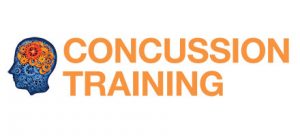HeadSafe is the training programme for concussion aimed at doctors, first responders, trainers, coaches, players and their parents.
These Frequently Asked Questions address key issues relative to concussion, most particularly in sport.
HeadSafe is a specific course in the Acute Management of Head Injuries developed in Australia by Dr. Adrian Cohen.
HeadSafe Training should be undertaken who is likely to be the first on the scene of a suspected concussion: sports doctors, physios, trainers and support staff, ambulance officers, army medics, first aiders, general public etc. In fact, almost everyone!!
- Concussion is a common injury in many sports and recreational activities.
- Sports like Australian football, rugby league and rugby union have amongst the highest rates of head injury of any team sports in the world with reported incidence of concussion ranging from about 3–10 concussive injuries per 1000 player hours or about five concussion injuries per team per season, regardless of the level of competition.
- In sports with similar playing rules, the reported incidence of concussion is higher among females than males.
- The definition of concussion is complex and relates to a series of pathophysiological processes affecting the brain which are induced by mechanical forces.
- Concussion is a subset of mild traumatic brain injury characterised by a set of neurological symptoms & signs which typically rise rapidly and resolve spontaneously.
- More often than not, concussion occurs due to direct contact with another player, as opposed to contact with playing equipment, but it should also be remembered that striking the ground fixtures such as goalposts can also provide enough force to result in a concussion.
- Impact studies show that forces from 20 to 180 G can be sustained by players without either concussion symptoms or changes in objective testing.
- Concussion is a common injury in many sports and recreational activities.
- Sports like Australian football, rugby league and rugby union have amongst the highest rates of head injury of any team sports in the world with reported incidence of concussion ranging from about 3–10 concussive injuries per 1000 player hours or about five concussion injuries per team per season, regardless of the level of competition
-
- Concussion is more severe in children than adults, due to the fact that their brains are still developing.
- The diagnosis of acute concussion usually involves assessment of a range of domains including clinical symptoms, physical signs, cognitive impairment, neurobehavioral features and sleep disturbance.
- There are a number of factors which have been suggested to affect the risk of sustaining a concussion or having a more protracted course.
- These include having a history of the prior concussion and the number and severity and duration of symptoms after it.
- It appears to be a predisposition to females and there may well be other genetic factors.
- Constant monitoring of the athlete post-injury, especially within the first 24 to 72 hours.
- Rest from work, school, normal social activities and sport so as to allow sufficient time for a full recovery.
- Preventing a second impact or injury by avoiding any activities that may jerk or impact the head.
- Avoiding certain medications, alcohol and drugs.
- The most effective way of treating concussion is to manage the injury properly as soon as it occurs.
- If an athlete’s condition quickly deteriorates, immediate hospital transfer is required.
- Children and adolescents are particularly susceptible to what is referred to as “second impact syndrome” or catastrophic diffuse cerebral swelling which can result in death or severe disability.
- Second impact syndrome can be occasioned by an impact during the same game or practice session which is why it is imperative that an injured player not return to the session.
- Similarly it appears that the brains of these individuals may be susceptible to a second impact several days, weeks or months after an initial injury.
- Chronic traumatic encephalopathy (CTE) is a form of encephalopathy that is a progressive degenerative disease, which can currently only be definitively diagnosed post-mortem, in individuals with a history of multiple concussions and other forms of head injury.
- Evidence suggests that repeated concussions or sub-concussive impacts can lead to CTE
- been unconscious for more than two minutes
- exhibit focal neurological signs such as weakness, altered sensation or reflexes
- any deterioration in their level of consciousness
- a seizure
- a worsening headache
- repeated vomiting
- Higher risk athletes or those with co-morbidities
- athlete received inadequate supervision following the injury
- The training material and skills assessed are identical for both courses.
- HeadSafe Online eLearning training takes from 1-3 hours, depending on the user, and the student is assessed against the theory components of the course.
- HeadSafe face-face training is conducted over 8 hours and all materials and equipment are provided. The HeadSafe Certificate is awarded to students deemed competent.
- HeadSafe is undertaken either online via our eLearning website, or as a face-face course for a minimum of 10 people.
- Online training takes from 1-3 hours, depending on the user.
- The face-face course is conducted over 8 hours, or two separate 4 hour sessions (theoretical and practical)
- Of course you should refresh your knowledge regularly, and keep up to date with the latest in concussion on this website
- Online eLearning HeadSafe Training costs $89 (GST exempt since considered First Aid Training)
- Face-face courses start at $220 (GST exempt since considered First Aid Training) plus travel and accommodation costs if required.
Can’t find what you are looking for?
Contact us online or at 02 8007 3903

